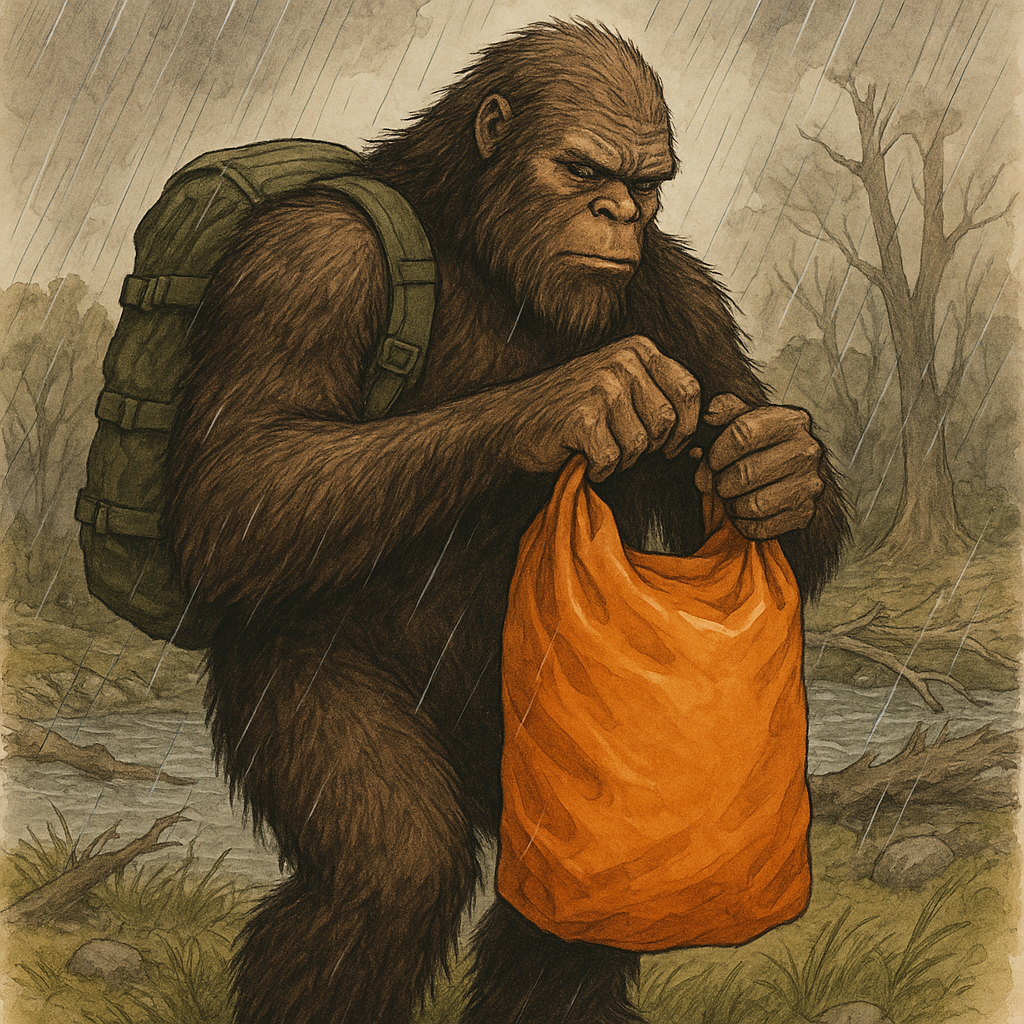What to Pack in Your Wet Weather Bags
For Hiking, Camping, and When the Sky Falls Out
If you’ve ever hiked in a storm or found yourself knee-deep in floodwater, you know this: wet gear ruins everything.
That’s why at Squatch Survival Gear, we never load a pack—whether it’s for a backcountry hike, a weekend campout, or emergency evacuation—without at least two wet weather bags inside.
We’re not talking gimmicks here. We’re talking about keeping your most important gear dry when everything else is soaked and falling apart.
Why Wet Weather Bags Matter
Let’s say you’re hiking and the rain sets in sideways. Or you’re bugging out during a flash flood. Maybe it’s just your pack soaking up sweat for ten hours.
Whatever the reason—you don’t want your meds, clothes, electronics, or critical documents ruined because you didn’t seal them up right.
Severe weather covers, Dry bags, waterproof liners, contractor trash bags—it doesn’t matter how high-speed they are, just that they work. But we recommend real, reusable waterproof bags for anyone serious about survival.
How Many Wet Weather Bags You Need
At a minimum:
-
1 small dry bag (2–10L)
-
1 large dry bag (20–40L)
Some folks add a third for food, first aid, or electronics. You’ll figure out your own rhythm, but two is the baseline.
What Goes in Each Bag
🔹 Small Dry Bag – “Don’t Lose This Stuff”
Use this one for essentials you can’t afford to get wet:
-
ID, licenses, insurance docs
-
Cash in small bills
-
Cell phone + power bank + cords
-
Any prescription meds
-
Map, compass, notepad
-
Passport (if traveling)
Squatch Tip: Put your papers in a Ziploc, then into the dry bag. Overkill is underrated. Better to have and not need than need and not have.
🔸 Large Dry Bag – “Warm & Dry = Alive”
Pack for the weather, but this is your dry base kit:
-
Dry socks & underwear
-
Base layer (top and bottom)
-
Rain jacket or poncho
-
Lightweight insulation (fleece or puffy)
-
Beanie and gloves
-
Emergency blanket or bivy
-
Small towel or bandana
Cold weather? Toss in thermal bottoms and a backup top layer. Don’t skimp on insulation, or socks.
🔺 Optional Bag – “Food & Tech”
If you’ve got room and weight margin:
-
Dry snacks (jerky, oats, bars)
-
Electrolyte drink mix
-
Headlamp + batteries
-
GPS, radio, signal mirror
-
Water filter or tablets
-
USB-powered gear or battery packs
Real Talk: Disasters Don’t End After the Rain Stops
We just got back from Ingram, Texas, where the Guadalupe River flooded and 96 people are still missing. Teams like Frogman Tactical USA are working the recovery—and they’re getting hurt. Cuts. Punctures. Fatigue.
We brought in trauma kits and first aid, but it reminded us why preparedness matters. The gear in your pack isn’t just about “what if”—sometimes it’s about right now.
What We Use
Packs like the Yowie Ruck Sack and Grassman were built for this. Big enough to hold multiple wet weather bags. Comfortable enough to carry when the trail disappears. Functional enough to help you keep moving when everything goes sideways.
Final Word from the Team Squatch
If you're heading out into the wild—or if the wild might come to you—wet weather bags are a non-negotiable. Build your system now, while the sun’s still shining. Because once you're wet, cold, and fumbling for a soaked phone or ruined meds—it’s too late.

